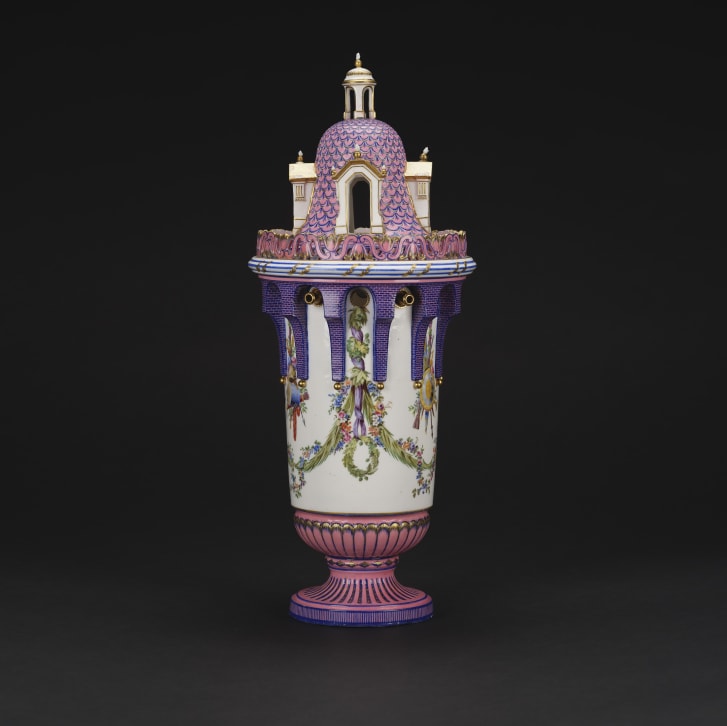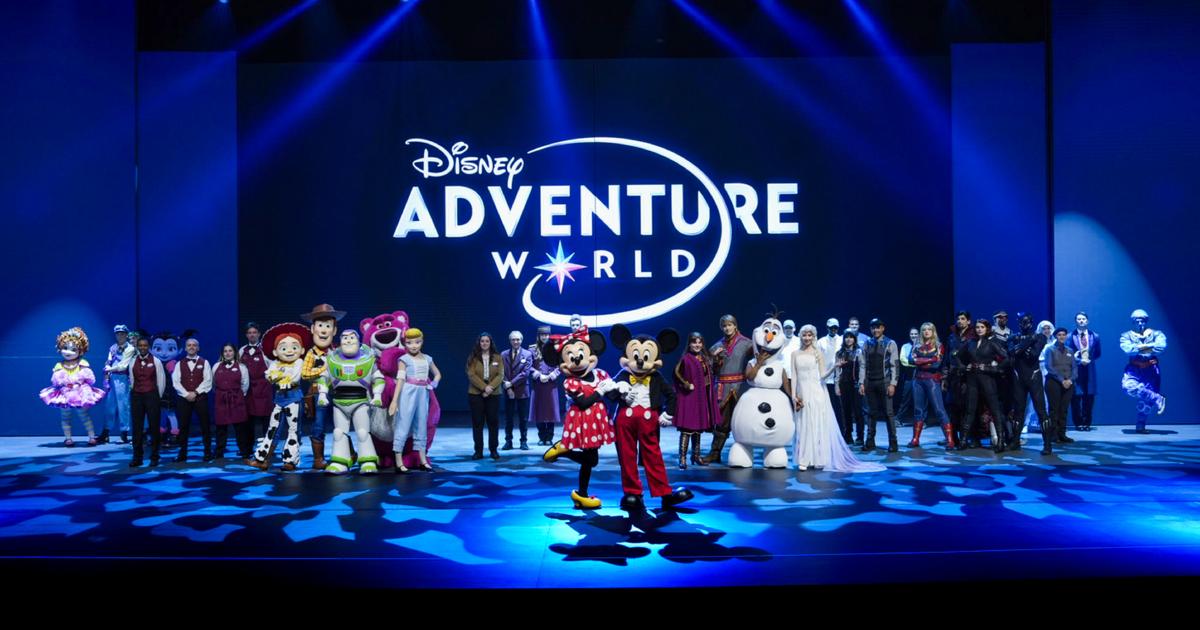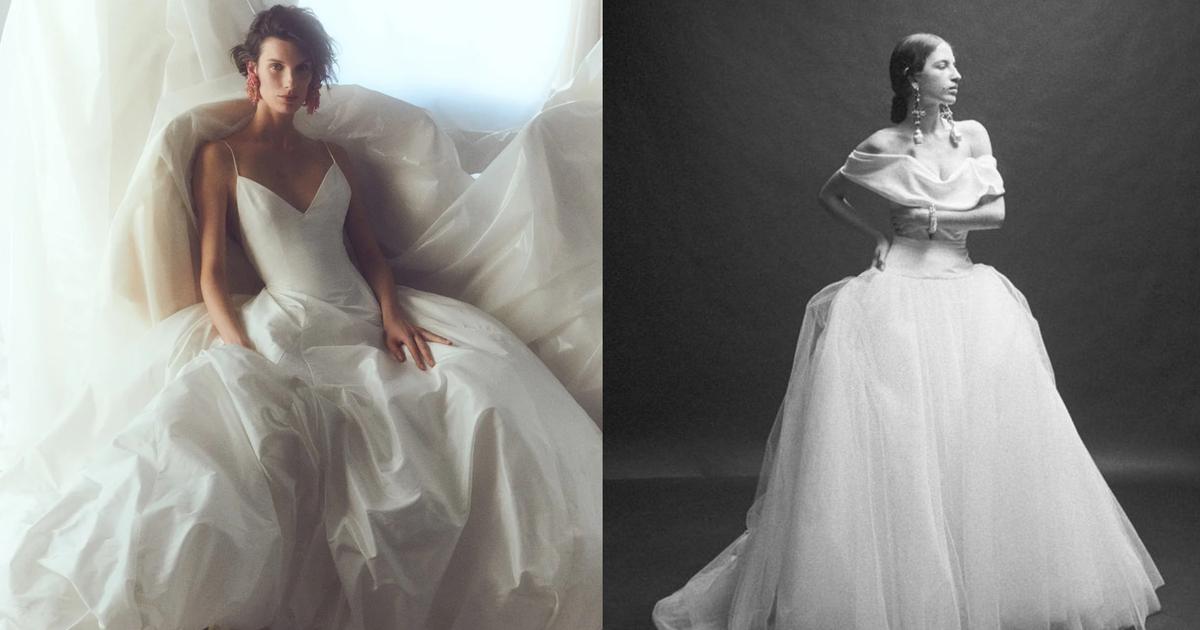Europe's influence on Disney movies 1:00
(CNN) -
Each year, more than a million people visit Neuschwanstein, a 19th-century castle located in the Bavarian Alps, famous for its Neo-Romanesque style and Gothic details, such as vertical limestone towers and turrets topped with Pointed roofs of deep blue color.
Once home to an introverted Bavarian monarch known as "the king of fairy tales," the castle has idyllic architecture, designed more for its aesthetics than its defense, that would end up inspiring the two castles. from the Disney animated films "Cinderella" and "Sleeping Beauty."
The Neo-Romanesque design of Neuschwanstein Castle served as the inspiration for two Disney castles.
Credit: Sean Gallup / Getty Images
Neuschwanstein also inspired in part theme parks and the Disney logo - the latter arguably became the company's most recognizable visual symbol, aside from Mickey Mouse ears - and a new exhibit at the Metropolitan Museum in New York. New York Art shows that European art and architecture influences don't stop there.
"Inspiring Walt Disney" showcases a series of decorative arts from centuries past that find resonance in some of the most famous animated settings produced, including tapestries, furniture, Boulle clocks and Sèvres porcelain.
The show combines these objects with production art and works on paper by artists from the Disney studio.
"Inspiring Walt Disney" presents a series of objects including porcelain pieces from Sèvres.
Credit: Courtesy of the Huntington Art Museum, San Marino, California
The exhibit includes gilt bronze chandeliers, Meissen porcelain teapots, and elaborate wall clocks that may remind visitors of minor characters from 1991's "Beauty and the Beast," which are turned into enchanted objects and help guide the Bella's way.
Also on display are the Lindau Gospels, a 9th-century volume inlaid with gemstones, which served as the inspiration for the jewel-decorated storybook "Sleeping Beauty" in the opening sequence of the 1959 film.
advertising
The exhibition makes direct comparisons between European decorative arts and famous characters and settings from Disney films.
Credit: The Metropolitan Museum of Art / Walt Disney Animation Research Library
Exhibition curator Wolf Burchard says that for many Americans, Disney films were their first encounter with visual media inspired by European culture and history.
"I think it's fair to say that 'Sleeping Beauty', for example, was for many children the first lens through which they looked at medieval Europe, or 'Cinderella' and 19th century Europe or 'Beauty and the Beast 'and eighteenth-century Europe, and France in particular. "
Disney trips abroad
The exhibition recounts the trips abroad of the founder of the company, Walt Disney, trips that would later influence some of the first films of the study.
The entertainer, raised in rural Missouri, first traveled to France during World War I as a teenager in the Red Cross Ambulance Corps, but never participated in combat.
After the war, he remained in France for nine months with the Red Cross, going to Paris, opposite the Louvre, near the Gardens of Versailles and in an alpine setting in the Vosges Mountains.
The visual direction for "Sleeping Beauty" drew heavily on medieval artwork, including a direct reference to the 9th-century Lindau Gospels.
Credit: Daderot / Public Domain / Walt Disney Archives
"That was his first trip abroad, and it was a transformative experience for him," Burchard said.
"That really changed his life and the lens through which he perceived art."
Mickey Mouse turns 93.
Here 6 facts that you may not know about the most famous Disney character
When Disney returned home, he founded his animation company, first called the Disney Brothers Studio, and introduced Mickey Mouse to the world through 1928's "Steamboat Willie," among other innovative new animations.
He traveled abroad again in 1935, this time touring England, Scotland, France, Germany, Austria, Switzerland, and Italy while producing "Snow White," and he returned with tons of books for the artists at The Walt Disney Studios.
Artists like Mary Blair synthesized a series of references to create the magical settings of Disney.
Credit: Walt Disney Animation Research Library
"He bought a lot of French stories during his stay in Paris, but he also bought quite a few German stories," explains Burchard.
"He really liked what he called that picturesque atmosphere of German tales, with forest creatures and mushrooms coming to life."
He also came back with visual landmarks that later ended up in his movies.
The Toad Hall in "The Wind in the Willows" from 1949 is believed to make a nod to the Tudor-style splendor of the Great Fosters English country hotel, according to the exhibition catalog, while its grounds may have been the site of Reference to the hedge maze from "Alice in Wonderland", 1951.
7 magical landscapes of Colombia in which Disney was inspired to recreate "Encanto"
Artists "in their own right"
But Burchard stressed that Disney was not the only artistic voice in his studio before his death in 1966; in fact, the studio has similarities to European decorative arts workshops, he said, where hundreds of artists work together to create something that "appears to be designed and made by one person."
The Disney animators were "all artists in their own right," Burchard said. They did not copy any particular art style or reference, but instead synthesized their inspirations into animated visual narratives. The show highlights animator Mary Blair's vibrant concept art for "Cinderella," including the sinuous white furniture with gold trim in the stepsisters' bedrooms, to artist Eyvind Earle's medieval vision for "Sleeping Beauty." The seven large-scale woven compositions known as the "Unicorn Tapestries", made in the southern Netherlands in the late 16th century, may have contributed to the visual development of the film, according to the exhibition. So were other famous Dutch works,like the illuminated manuscripts made by the Limbourg brothers, as well as the paintings of Jan van Eyck.
The "Unicorn Tapestries" were central to the development of "Sleeping Beauty".
Credit: Public Domain / Met Museum
Not all inspirations made it to the big screen, as was the case with the 18th century oil painting "The Swing", by the Rococo artist Jean-Honoré Fragonard.
"Beauty and the Beast" originally featured an opening sequence inspired by the painting - showing a young woman in a pink dress swinging in the air in a flowery setting - but it was removed when the overall visual direction changed. of the movie.
Fragonard's painting was mentioned again in the initial concept art for 2010's "Tangled," but never in the film, and it eventually made an appearance in the 2013 film "Frozen."
Fragonard's "The Swing" was a source of inspiration for the first concept art for "Beauty and the Beast."
Credit: Walt Disney Animation Research Library
It is the Rococo period in France, depicting scenes of romance and youth with curved lines and ornate, pastel-hued settings, that finds the closest kinship to some of the most famous Disney films of the 20th century.
At that time, artists tried to create the illusion of movement through stationary paintings, such as "The Swing", and objects, such as the wavy gold chandelier that parallels Lumiere in "Beauty and the Beast." .
(The authors of the time also liked anthropomorphism, that is, endowing inanimate objects with human personality).
"Visually you have bright, punchy colors," Burchard said of the similarities.
"And you have the ambition to animate what is inanimate. Thus the illusion of life is created through animation."
Rococo artists had an ambition to "animate the inanimate" through sinuous curves and living forms, said curator Wolf Burchard.
Credit: The Metropolitan Museum of Art / Walt Disney Animation Research Library
But it also draws a parallel with the intention of French decorative artists, who did not set out to make intellectual works of art, but things that were pleasing to the eye, a similar sentiment shared by Disney, who insisted throughout his life that he was simply engaged to entertainment.
"These are objects created to elicit a visceral rather than a cerebral response," says Burchard.
"They're supposed to be fun, cute, or quirky. And then we come in 250 years later and we start to over-interpret some of these objects."
Should Disney movies be considered works of art?
Within the walls of the Metropolitan Museum of Art, the institution would say yes.
But in the spirit of the French decorative arts tradition, the point is not to overanalyze ... and enjoy the show.
The "Inspiring Walt Disney" exhibition will be available until March 6, 2022.
Disney




/cloudfront-eu-central-1.images.arcpublishing.com/prisa/FSFGRDKRKFGKDNLTPAUQZOBOXA.jpg)










